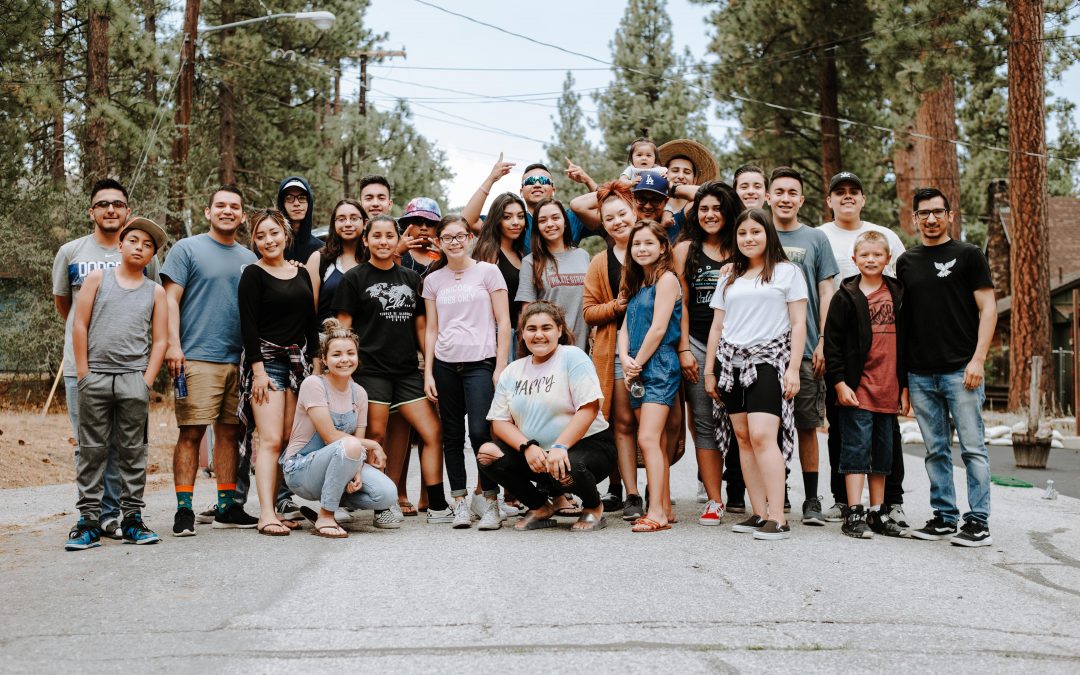
The Gin Map
OK, folks, little personal post here. If you are not interested in gin, or are not old enough to drink it, you can safely ignore this.
I am an enormous gin fan. I love it. Yes, I know it divides people and many of you can’t stand the stuff, but hey, our differences make the world go around, right?
Well, I have set myself a fun little challenge. I want to try a gin from EVERY country in the world.
Now, I know what you are thinking. Some countries probably don’t produce gin. Well, I am not sure how much I believe you: if there is water, juniper, and a bowl, someone somewhere is producing gin. I am going to find it.
I will be tracking this on the Bacon Gin Map. I won’t add anything to the map unless I have a picture of the bottle, so many gins I have tried are not on there yet due to this picture requirement. I will also add short reviews or comments (again, some of the gins I have already tried that are there will get their reviews updated when I can try them again.)
I have my bar at home, and if you want to contribute a new bottle to the collection, I will snap a photo of us with it and add it to the map with a credit to you. Yes, this is a shameful attempt to solicit bottles of gin from you all.
Know of a gin from a country I have not covered yet? Great! Let me know in the comments below, or use the hashtag #baconginmap on Twitter.
I will be updating the map regularly. So, for you gin aficionados, feel free to check out the map if you want to try a gin from somewhere a little different.
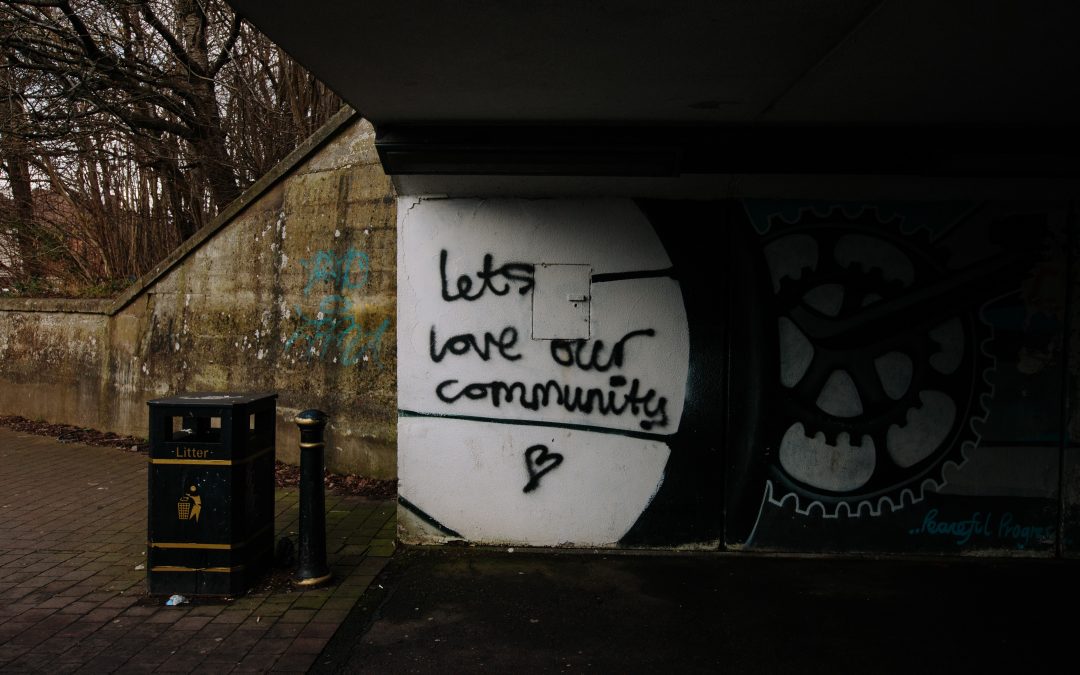
Mimicry: Use It To Be a Better Leader
Mimicry is an interesting phenomenon in nature. Animals copy animals in various ways, such as the common behavior of insects changing their appearance as a tool to fool predators.
Interestingly, human beings mimic other human beings too. We haven’t yet figured out how to change ourselves to look like others (excepting the obvious documentary evidence that is FACE/OFF).
We do though copy and model other people’s behavior. Often known as mirroring, we copy people’s interests, speech patterns, key words/phrases, visual dress/fashions, and more.
Now, this can all generate positive feelings (Andersen, 1998) and make you more persuasive (Balinson & Yee, 2005), but there is also a significant risk of putting your foot in your mouth socially (Lui, et al., 2011) and mimicry having unintended consequences.
This can all have interesting implications, particularly for leadership. Here are some ways in which you can understand and harness it.
1. Practice empathy and active listening
One of the risks with mimicry is that when inauthentically applied, it can appear condescending and actually harm a relationship. We have all seen this with over-zealous sales reps who demonstrate an almost creepy level of enthusiasm and interest in everything you say, do, and observe. It just comes across as fake.
Empathy is a key component in building human relationships When we say people are “down to earth”, it is usually that they demonstrate empathy with the social dynamics of the other person, particularly if they are members of a different social group.
For example, a while back I did an interview with Bruce Dickinson from Iron Maiden for my Forbes column, who I am an enormous fan of. He came across as “down to earth” because even though he was a world-renowned rock singer, entrepreneur, and author, he could identify and demonstrate humility with the things I shared in the conversation. It solidified the perception I have of him.
Part of the reason why this happened is that Dickinson demonstrated active listening. While the dynamic of the discussion was an interview where he was expected to provide the content, interestingly, he regularly asked me questions, responded to my comments, and built on the things I was saying. He did this with remarkable humility and grace.

Credit
Active listening is a critical component of great leadership. As people progress up the career ladder they usually want to talk more, not less.
This combo of empathy and active listening can not just demonstrate fantastic leadership skills, but it accomplishes the same goals of mimicry without the risk of being inauthentic.
2. Be an equal opportunities mimicker
A first study by Leander, Chartrand and Bargh in 2011 determined that the people who are not mimicked in a scenario can feel less engaged and more left out than those who are. Our subconscious picks on these mimic cues, or the lack of them, from other people (especially people we want to build a relationship with.)
Interestingly though, two further studies determined that it wasn’t the lack of mimicking that was the cause, but instead that the mimicking was inappropriate and didn’t work.
This is an important lesson for leaders. When you talk with your teams, authenticity is critical when you mimic some of the characteristics of your team, but you should try to apply this equality. It sounds simple, but this means building a rapport with everyone as opposed to a hand-picked few.
Now, this can be tricky. Sometimes you just have more in common with certain people than others, often informed by your shared interests, ideas, and how much you have worked together. The true test of leadership though is building rapport and inspiration with others even when you feel you don’t have as much in common with them.
Of course, this takes time and practice, but it will produce a more stable level of leadership.
3. Don’t humiliate people who mirror you
In every social scenario there is a power exchange.
You walk into a job interview, and the person recruiting has the power. You join a new company, and your colleagues have the power. You meet your hero, and they have the power.

Credit
When we don’t have the power in a situation, it is more common for us to mimic the other person. It is our subconscious attempts to build rapport and grease the wheels to get what we want, be it a job, approval, their friendship, or something else.
Turn the tables. Imagine you are the one with the power and someone is mimicking you to build this rapport. Sometimes this mimicry is noticeable, sometimes it isn’t. Either way, be a grown-up about it, and never humiliate them.
I have seen some assholes denigrate the other person for their attempts to build this rapport. They criticize them for copying them, and sometimes share this criticism in front of their peers or even strangers. This won’t just sully their view of the person in their mind, but it can generate a deep-rooted sense of humiliation which can damage a relationship for years.
Stay classy. Their mimicry is a sign of respect. Treat it as such.
4. Surround yourself with the people you want to be like
Human beings are driven to form relationships with others. As was discussed in this paper, many unhealthy habits such as drinking and smoking are driven by the social dynamics required to fit into a group we want to be a part of.
Put simply: if you hang out with people who have bad habits, you pick them up via mimicry. If you hang around people with good habits, you pick them up too.
As such, structure your social groups with this in mind. Want to grow your career (speaking of which, see my 10 Avoidable Career Mistakes video)? Spend time with people in your industry. Want to be a better musician? Hang out with people who play in great bands.
Don’t just surround yourself with people where you have the power: surround yourself with people you can learn from.

Credit
I think it is important to take a dual-edged approach to this. For example, I love my career, and I always want to grow and learn. I spend a lot of time with some pretty accomplished people, which has had an amazing impact on me.
Similarly though, I never want to get subsumed into the “career bubble” and only surround myself with career people. I love dive bars, going to see live shows in San Francisco, playing music with my buddies, watching stand-up comedy, and more. Mimicry happens here, and I would like to think it keeps my feet on the ground and my ego in check.
Psychological patterns such as mimicry (and the Ikea Effect) play a pivotal role in everything we do. How else do you use these kinds of patterns? Be sure to share them in the comments!
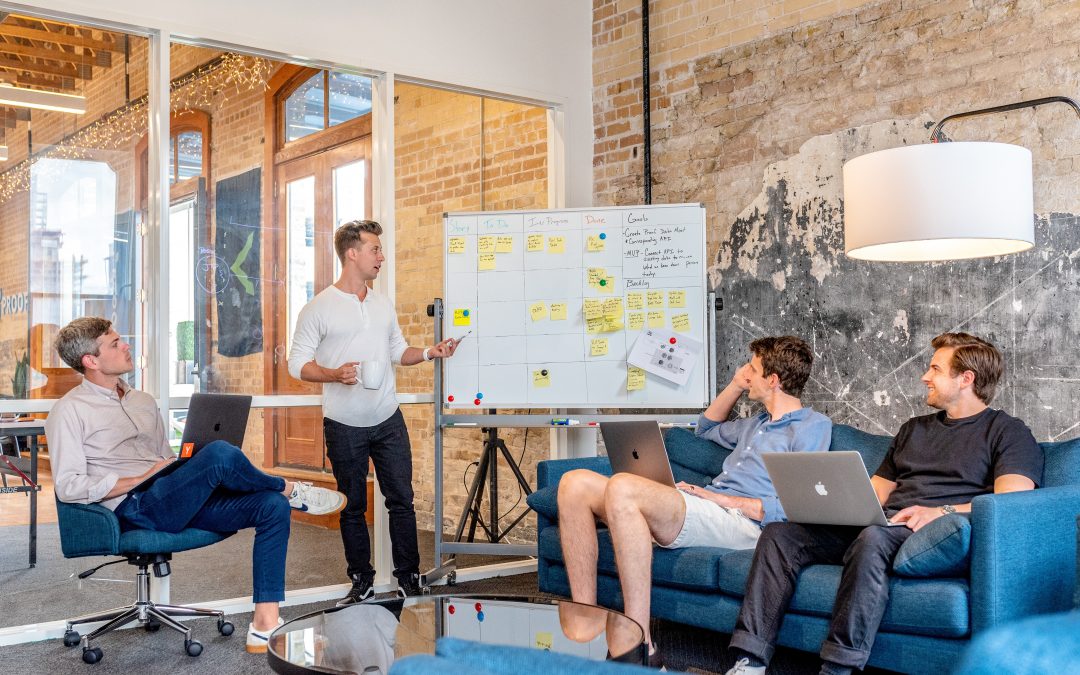
How To Rock The Call For Papers And Get Your Talk Picked
The Call For Papers. A battle of wits, personality, and expertise where every contender wants a coveted slot at the conference.
Last week I announced that I am running the Open Collaboration Conference again which is part of the Linux Foundation‘s Open Source Summit. The North American event takes place this year in San Diego from 21st – 23rd August 2019 and the Call For Papers just opened. I will be announcing the European CFP later in the year.
Every year we get an amazing range of submissions, and it got me thinking…what would I recommend to people submitting sessions at this, or other conferences? How do you get your submission picked?
I have been running conferences for most of my career, and here are 7 recommendations I would make to anyone submitting sessions.
Now I want to be very clear: these are my personal recommendations. Not every program committee will share these views, but as a general rule, I think they will help. Be sure to share your tips too in the comments too!
1. Talk about something people really care about
It may seem obvious, but the point of a presentation is to deliver information that should to be of interest to your audience. Now, what kind of information is of interest will be heavily dependent on the type of conference and audience.
For example, at the Open Collaboration Conference, it attracts a pragmatic professional technology audience. That audience has specific types of content they generally care about (e.g. collaborative workflow, community management, incentives and rewards, etc) and technologies they care about (e.g. Slack, GitHub, Discourse, Bitergia). Other conferences will have a different focus and topics.
Think carefully about what your audience is interested in as opposed to what you are. What problems do they want to solve? What are the gaps in their experience? Where do they need guidance. You need to serve a need and purpose, and if you can map your presentation more commonly to these needs, you are more likely to get picked.
2. Share pragmatic advice and experience
At everyone conference I have ever run we get two broad buckets of submissions:
- Big picture talks where the presenter wants to walk through a more general vision of something (e.g. “The future of Open Source“, “The next generation of online banking“.)
- Specialist guidance about solving specific problems or overviews of specific approaches (e.g. “10 ways to harness Salesforce in your business“, “Creating your first smart contract with Ethereum“.)
Great conferences have a mixture of both. The tricky thing from the perspective of a program committee is that only having big picture sessions can make for a very generic program. As such, a limited number of big picture presentations tend to get picked with a larger number of more specialist topics.
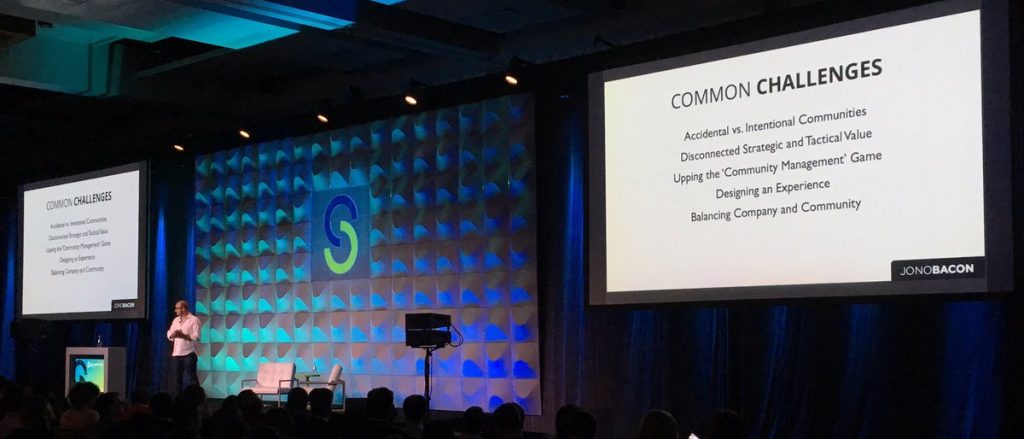
Credit
Now, some conferences are more general-purpose in nature, and it can be tempting to only submit big picture sessions. Even if you do this, you should focus on pragmatic guidance. What are the three or five key conclusions your audience should take away? How do they apply those conclusions in their own world?
This will all help draw a clear dotted line between the needs of attendees and what you can offer.
3. Be concise, clear, and emphasize the value you are offering
If people are going to take 30 or 45 minutes of their day to watch you speak, they need to get something valuable out of that time investment. They have a million emails, phone-calls, and documents piling up, so why is seeing you speak worth it?
This needs to be front and center in your submission. List out the value the audience will be able to take away from your session, and this should be as clear and pragmatic as possible.
For example, avoid: “Attendees will get a good understanding of Google Analytics“.
Instead focus on, “Attendees will learn how to measure key Google Analytics metrics (such as visitors, users, and bounce rate), as well as set goals, measure conversions, and much more.“
Focus every inch of your submission on this pragmatic value. You want the program committee to read it and immediately see the value you can bring.
4. Grab attention without being an attention seeker
There is a wide gulf between the best and worst speakers on the conference circuit. The latter are dull, boring sessions that you have to mentally struggle to stay awake to. The former keep you interested, engaged, and excited every step of the way.
Submit sessions that are interesting, engaging, and challenging, but don’t resort to clickbait titles and topics. Break the mold of what people normally talk about and how they discuss it, but stay classy.
Instead of “How to build a go-to-market plan“, consider “Six common flaws in go-to-market plans“. Don’t submit “Dogs are dumb. Got your attention, now come to my talk.“
Also, in-line with the staying classy mantra, keep politics and religion out of your sessions. Also, avoid sexualized imagery, and try not to be an asshole about other people to make a point.
Get creative. Include new and interesting demos. Build tension by sharing how you averted disaster and sharing those principles with your audience. Challenge the norm and conventional wisdom. All this makes for a more compelling session.
5. Avoid product pitches
If there is one sure-fire way to kill your submission at most conferences it is to submit an obvious marketing or product. You may be excited to share the “10 amazing benefits” of using your product, but unless you have something that the audience genuinely cares about, it will be seen as advertising fluff and (likely) get binned.
Be smarter. You can still showcase the great things your product can do, but by teaching another topic and incorporating the product as an ingredient. For example, “How to build a knowledge base with WordPress” is far more interesting to a program committee than “How WordPress can power your business“.
6. Put the ego to one side
I was at a conference a little while back where there were the usual keynotes in the morning. The first keynote was from a speaker with an impeccable business record and was focused, had great content and was down-to-earth. The second speaker had great experience, but used every moment to brag about their accomplishments and how they were an “industry inspiration” (ahem). Frankly, it was embarrassing to watch.

Credit
Look, we all have egos. Sometimes they can get a little out of hand, particularly for those who experience success quickly. You have to be very careful in how much of your ego you let into your submission. Program committees often don’t want ego-ridden sessions, not just because they are annoying, but also because they often become advertising carousels for the speaker’s books, videos, events, and other material they are schlepping.
This presents a challenge though: how do you sell yourself and the value of you as a speaker?
This is how I try to approach it: when you submit the topic for your session, focus on the value the audience will take from the content. Sell the program committee on how it will benefit the conference. Now, focus your experience and chops on the bio where you can really share your accomplishments and experience and why you are the ideal speaker. People expect more extravagance in the bio and this avoids your session description sounding like an Oscars acceptance speech…
7. Get feedback and act on it
It doesn’t matter whether you have been submitting sessions to conference for 20 years or 20 minutes, we all have something to learn.
There is an art to judging what an audience may care about, submitting a compelling session, and then getting it picked.
Similarly, there is an art to delivering awesome talks. Speaking of which (pun throughly intended), you may want to see my 10 Ways To Up Your Public Speaking Game article.
Look at which sessions at the conference got picked and which didn’t. Compare what you submitted and then ones on the schedule. What are the clues you can spot? Was it the topic? Was it the style of the sessions?
Some conferences are happy to provide feedback when your session isn’t selected. Ask for it. It doesn’t hurt, and if they have time, they may respond. Some won’t though as they are often dealing with hundreds of sessions.
Also, ask people who have been speaking for help and guidance. I have learned so much from my friends and colleagues over the years. Again, it doesn’t hurt to ask: the worst thing they can do is blow you off.
Best of luck and let me know how you get on, and I look forward to seeing you all treading the conference boards!

Remote Working Survival Guide
Remote working seems to be all the buzz. Apparently, 70% of professionals work from home at least once a week. Similarly, 77% of people work more productively and 68% of millennials would consider a company more if they offered remote working. It seems to make sense: technology, connectivity, and culture seem to be setting the world up more and more for remote working. Oh, and home-brewed coffee is better than ever too.
Now, I am going to write another piece for how companies should optimize for remote working (so make sure you Join As a Member to stay tuned — it is free).
Today though I want to share recommendations for how individuals can do remote working well themselves. Whether you are a full-time remote worker or have the option of working from home a few days a week, this article should hopefully be helpful.
Setting Expectations
Now, you need to know that remote working is not a panacea. Sure, it seems like hanging around at home in your jimjams, listening to your antisocial music, and sipping on buckets of coffee is perfect, but it isn’t for everyone.
Some people need the structure of an office. Some people need the social element of an office. Some people need to get out the house. Some people lack the discipline to stay focused at home. Some people are avoiding the government coming and knocking on the door due to years of unpaid back taxes.
Remote working is like a muscle: it can bring enormous strength and capabilities IF you train and maintain it. If you don’t, your results are going to vary.
I have worked from home for the vast majority of my career. I love it. I am more productive, happier, and empowered when I work from home. I don’t dislike working in an office, and I enjoy the social element, but I am more in my “zone” when I work from home. I also love blisteringly heavy metal, which can pose a problem when the office don’t want to listen to After The Burial.

Credit
I have learned how I need to manage remote work, using the right balance of work routine, travel, and other elements, and here are some of my recommendations.
1. You need discipline and routine (and to understand your “waves”)
Remote work really is a muscle that needs to be trained. Just like building actual muscle, there needs to be a clear routine and a healthy dollop of discipline mixed in.
Always get dressed (no jimjams). Set your start and end time for your day (I work 9am – 6pm most days). Choose your lunch break (mine is 12pm). Choose your morning ritual (mine is email followed by a full review of my client needs). Decide where your main workplace will be (mine is my home office). Decide when you will exercise each day (I do it at 5pm most days).
Design a realistic routine and do it for 66 days. It takes this long to build a habit. Try not to deviate from the routine. The more you stick the routine, the less work it will seem further down the line. By the end of the 66 days it will feel natural and you won’t have to think about it.
Here’s the deal though, we don’t live in a vacuum (cleaner, or otherwise). We all have waves.
A wave is when you need a change of routine to mix things up.
For example, in summertime I generally want more sunlight. I will often work outside in the garden. Near the holidays I get more distracted, so I need more structure in my day. Sometimes I just need more human contact, so I will work from coffee shops for a few weeks. Sometimes I just fancy working in the kitchen or on the couch.
You need to learn your waves and listen to your body. Build your habit first, and then modify it as you learn your waves.
2. Set expectations with your management and colleagues
Not everyone knows how to do remote working, and if your company is less familiar with remote working, you especially need to set expectations with colleagues.
This can be pretty simple: when you have designed your routine, communicate it clearly to your management and team. Let them know how they can get hold of you, how to contact you in an emergency, and how you will be collaborating while at home.
The communication component here is critical. There are some remote workers who are scared to leave their computer for fear that someone will send them a message while they are away (and they are worried people may think they are just eating Cheetos and watching Netflix).
You need time away. You need to eat lunch without one eye on your computer. You are not a 911 emergency responder. Set expectations that sometimes you may not be immediately responsive, but you will get back to them as soon as possible.
Similarly, set expectations on your general availability. For example, I set expectations with clients that I generally work from 9am – 6pm every day. Sure, if a client needs something urgently, I am more than happy to respond outside of those hours, but as a general rule I am usually working between those hours. This is necessary for a balanced life.
3. Distractions are your enemy and they need managing
We all get distracted. It is human nature. It could be your young kid getting home and wanting to play Rescue Bots. It could be checking Facebook, Instagram, or Twitter to ensure you don’t miss any unwanted political opinions or photos of people’s lunches. It could be that there is something else going on your life that is taking your attention (such as an upcoming wedding, event, or big trip.)
You need to learn what distracts you and how to manage it. For example, I know I get distracted by my email and Twitter. I check it religiously and every check gets me out of the zone of what I am working on. I also get distracted by grabbing coffee and water, which then may turn into a snack and a YouTube video.

The digital distractions have a simple solution: lock them out.
Close down the tabs until you complete what you are doing. I do this all the time with big chunks of work: I lock out the distractions until I am done. It requires discipline, but all of this does.
The human elements are tougher. If you have a family you need to make it clear that when you are work, you need to be generally left alone. This is why a home office is so important: you need to set boundaries that mum or dad is working. Come in if there is emergency, but otherwise they need to be left alone.
There are all kinds of opportunities for locking these distractions out. Put your phone on silent. Set yourself as away. Move to a different room (or building) where the distraction isn’t there.
Again, be honest in what distracts you and manage it. If you don’t, you will always be at their mercy.
4. Relationships need in-person attention
Some roles are more attuned to remote working than others. For example, I have seen great work from engineering, quality assurance, support, security, and other teams (typically more focused on digital collaboration). Other teams such as design or marketing often struggle more in remote environments (as they are often more tactile.)
With any team though, having strong relationship is critical, and in-person discussion, collaboration, and socializing is essential to this. So many of our senses (such as body language) are removed in a digital environment, and these play a key role in how we build trust and relationships.
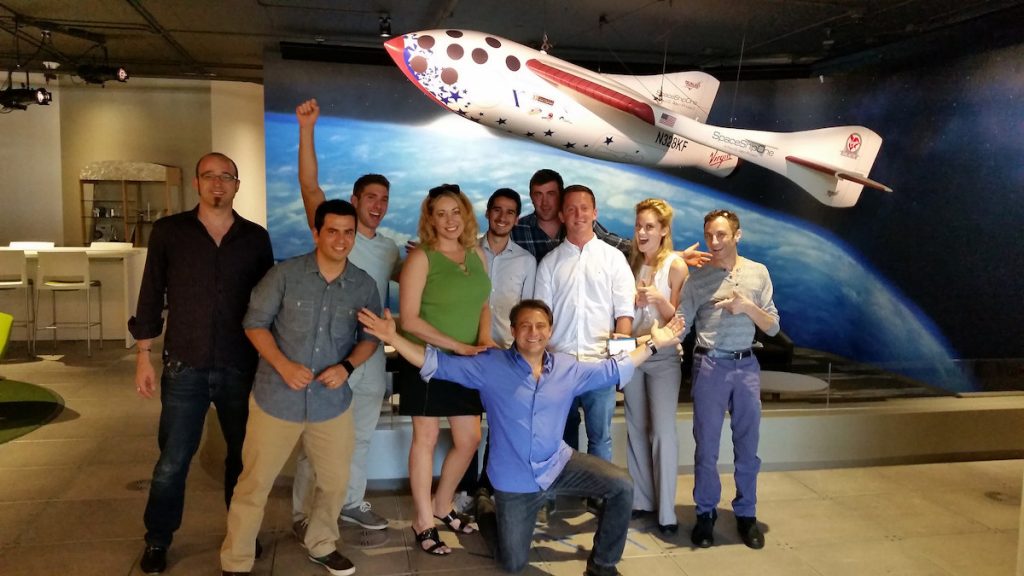
This is especially important if (a) you are new a company and need to build these relationships, (b) are new to a role and need to build relationships with your team, or (c) are in a leadership position where building buy-in and engagement is a key part of your job.
The solution? A sensible mix of remote and in-person time. If your company is nearby, work from home part of the week and at the office part of the week. If your company is further a away, schedule regular trips to the office (and set expectations with your management that you need this).
For example, when I worked at XPRIZE I flew to LA every few weeks for a few days. When I worked at Canonical (who were based in London), we had sprints every three months.
5. Stay focused, but cut yourself some slack
The crux of everything in this article is about building a capability, and developing a remote working muscle. This is as simple as building a routine, sticking to it, and having an honest view of your “waves” and distractions and how to manage them.
I see the world in a fairly specific way: everything we do has the opportunity to be refined and improved.
For example, I have been public speaking now for over 15 years, but I am always discovering new ways to improve, and new mistakes to fix (speaking of which, see my 10 Ways To Up Your Public Speaking Game.)
There is a thrill in the discovery of new ways to get better, and to see every stumbling block and mistake as an “aha!” moment to kick ass in new and different ways. It is no different with remote working: look for patterns that help to unlock ways in which you can make your remote working time more efficient, more comfortable, and more fun.
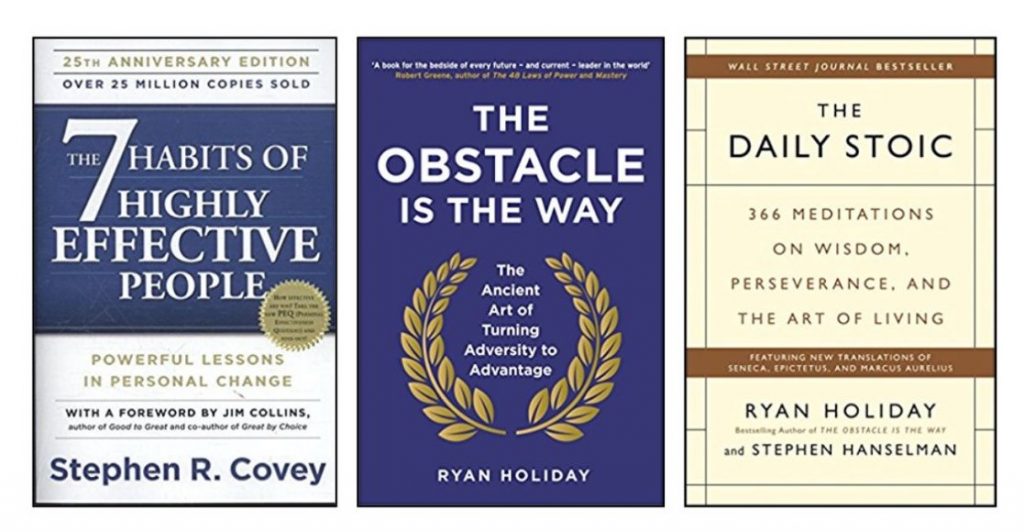
See my $150 Personal Development Kit article
…but don’t go crazy over it. There are some people who obsesses every minute of their day about how to get better. They beat themselves up constantly for “not doing well enough”, “not getting more done”, and not meeting their internal unrealistic view of perfection.
We are humans and as such, we are animals and not robots.
Always strive to improve, but be realistic that not everything will be perfect. You are going to have some off-days or off-weeks. You are going to struggle at times with stress and burnout. You are going to handle a situation poorly remotely that would have been easier in the office.
Learn from these moments but don’t obsess over them. Life is too damn short.

Video: 10 Avoidable Community Management Mistakes
Community management is hard work. It requires a careful balance of technology, psychology, workflow, and building organizational capabilities.
Fortunately, as the Internet continues to spread, more and more people are building communities. As such, we have a growing corpus of experience, and importantly, mistakes we can learn from.
Learning from failure is a critical component of how we grow. Community management offers rich potential here because it is chock-full of strategic and tactical decisions. We have to build a diverse tapestry of experience that weaves together strategy, growth, incentives, psychology, and more to net an overall successful community. There simply isn’t a way to do this without making mistakes: it is human nature.
Here are 10 key avoidable mistakes I recommend you swerve around as you kick your communities into action in 2019:
Can’t see the video? Click here.
I regularly post these kinds of nuggets of information and best practice. Be sure to join as a member: it is free and it will keep you in the loop with new articles, exclusive content, free consulting opportunities, competitions, and more.

Using The ‘IKEA Effect’ To Improve Collaboration
There is an interesting psychological pattern wedged into all of our brains called the IKEA Effect.
Put simply: we overvalue the things we either created ourselves or had a role in creating. It is named after the Swedish furniture manufacturer that puts you to work building the furniture you buy with “usually intuitive” instructions.
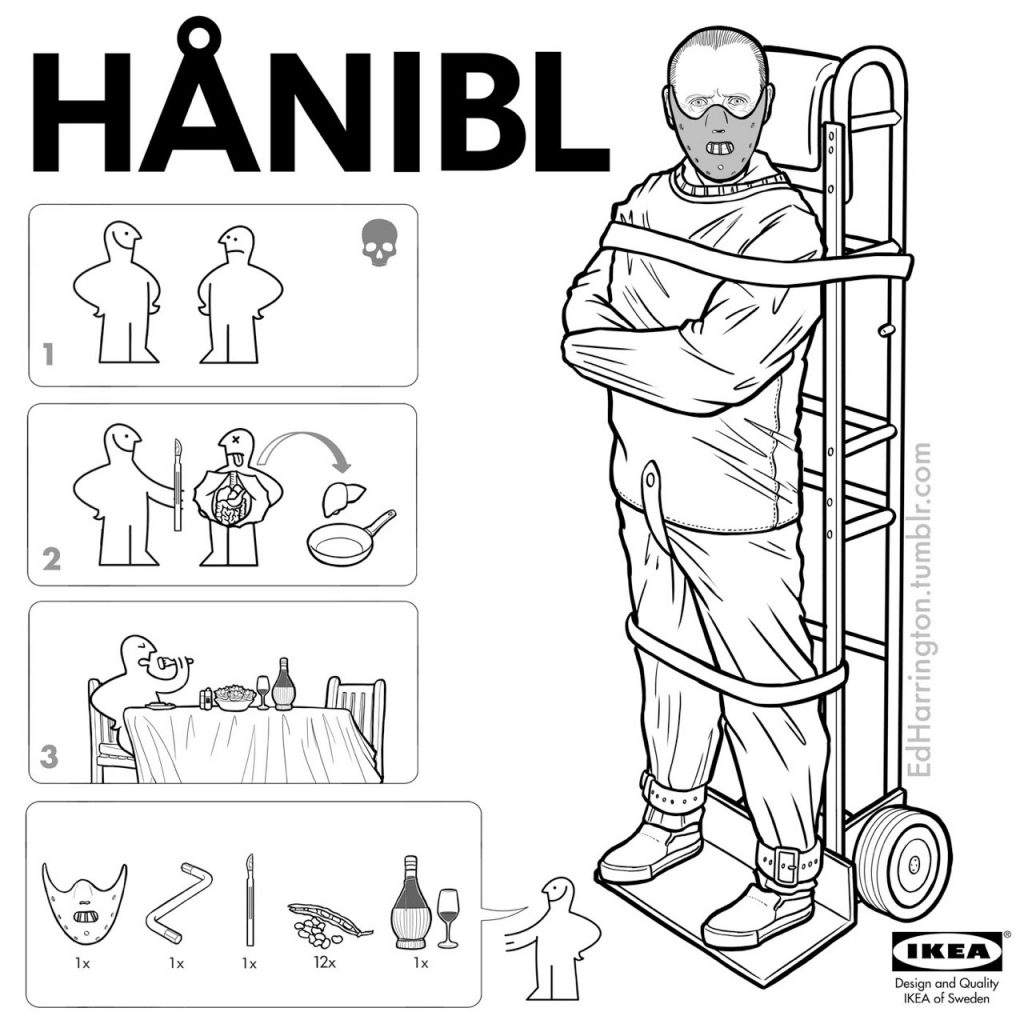
Credit
In true honor of the Swedish giant, I am going to see how many Ikea products I can reasonably weave into this post. May the HAMNSKÄR of recommendations open.
The core of the Ikea Effect is based on our relationship to labor. Some previous studies found that the more effort we put into something, the more we value it.
This all has an interesting impact on collaboration which is at the core of how we build communities, companies, and teams. Harnessed well, the Ikea Effect can produce pride in creation. If ill-managed, it can cause infighting between collaborators.
So, how do we harness this in collaborative environments such as communities, companies and teams?
Here are my five pragmatic recommendations:
#1. Encourage customization
Pride of ownership doesn’t just have to relate to producing entirely new things (such as a rock-solid MÖRBYLÅNGA). It can also relate to customizing something.
We see this everywhere. When you buy a new car you can choose the seat materials, trim, color, entertainment options, and more. When you buy a computer you can select the processor, hard disk, and memory. When you buy a TÖRNVIKEN you can select the counter-top material and color.
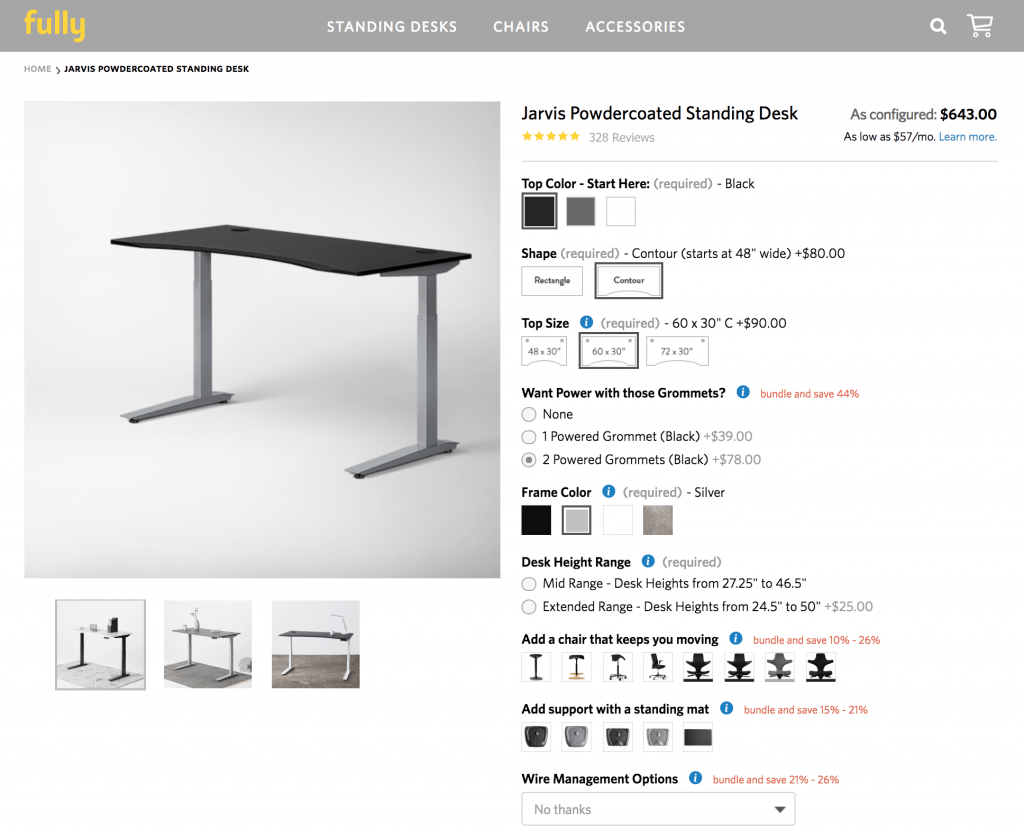
We see this in video games where players can customize their characters, cars, and weapons. We see it in exercise programs where you can tune workouts based on fitness goals.
When you think about your products, culture, and communities, evaluate how you can provide clear, customizable options. These options should be simple, map clearly to outcomes, and not be overwhelming. Optimize for a simple set of options, not a ridiculous airline cockpit of buttons.
#2. Have clear, objective collaboration and quality guidelines
Many communities, and all companies, are collaborative in nature. People need to work together to produce something of shared value (e.g. an open source project in a community, or a product in a company.)
This requires people to take something that exists and improve it. This could be a codebase, a product, a book, a website, or anything else.
One of the risks of the Ikea Effect is that someone contributes an improvement (which they over-value), and then they struggle if other people either don’t see the value of that improvement or are critical of it. In the short-term it can ding their motivation and in the long-term it can generate bottled up ill-will to the people who criticize them.
The solution here are clear collaboration and quality guidelines.
We see this with how many open source projects require that 2 people approve each new code contribution before it is accepted and merged in. TEDx events have very clear requirements on how the events should be organized and run. Online app stores have stringent requirements for new apps.
These collaboration requirements won’t stop people over-valuing their creations, but clearly agreed light-weight collaboration and quality standards will help to reduce ambiguity and potential conflict over contributions.
#3. Be overtly collaborative in decision-making
As a community strategy consultant, my goal is to not just provide high quality guidance to my clients, but to also wire this guidance up so it can be easily used and applied in their business and with their teams.
This can be trickier than you might imagine. Consultants have influence (which is why they hire me), but no actual power. As such, for my guidance to be used, my clients (and their teams) need to be bought into the value of it.
I have consistently found that (while situated at a GRÖNLID with your feet up on a TRULSTORP, lit gently by a HEKTAR) my clients utilize my advice more when I incorporate them into the strategic process and they play an active role in forming the decisions. Some consultants simply go away and produce a report by themselves, but I generally don’t do this.
This taps into the Ikea Effect because they then feel a sense of ownership of the strategy, as opposed to feeling they were just handed a strategy by some balding English guy with a strange beard and great taste in music.
When you build strategy, make decisions, and make changes in your company or community, try to integrate people as much as possible. It will wire up the Ikea Effect for your benefit and make them value their contributions to it (which in turn has a dramatic effect when people feel they are doing meaningful work.)
#4. Socialize what “high quality” means
One of the risks of the Ikea Effect is that people may produce something that is a bit shonky and poor quality but they think it is the bees knees.
We have all seen this. The musician who produces an awful song seemingly weaved together from 35 cats being electrocuted at the same time into a microphone. The poorly written, ram-shackle book held by a beaming author. Every cake on Nailed It…

Credit
We also see this when people sell things. They will often over-price their possessions because they value them too much. This is also what can lead to hoarding.
The solution here is to communicate clearly what quality means (which is hopefully the opposite of a MARIUS). What does a great product improvement look like? What does a great process look like? What is a great community contribution?
This is obviously harder said than done, and it is important that this definition of quality is repeatedly reenforced. It needs to present in your collaboration requirements, in how people work together, in how mentoring is delivered and more.
#5. Integrate identity and team spirit into collaboration
Our sense of identity plays a primary role in the Ikea Effect. The pride of creation is intrinsically linked to you, your self-image, and your character.
This is a powerful emotion we can tap into. We see countless examples of people producing work and taking great pride in showcasing it. Athletes hang their medals on their wall, professionals put their qualifications in their office, proud parents plaster Honor Student stickers on their cars, and more.
If the Ikea Effect means we overvalue our creations, it also means we take pride in what we produce (such as a plate of delicious ALLEMANSRÄTTEN). As such, temper the “over-value” element of the Ikea Effect with my other suggestions, but bolster the pride component by highlighting great work when it occurs.
When people create such great work, think about how you can celebrate it. How can you help them shine? How do you validate them?
Peloton do this when they call out riders who hit milestones. Software projects do this for first-time contributors. HackerOne highlights top security researchers in their initiatives. Teachers do this when kids reach new academic achievements. We all need great work to be celebrated; it builds our confidence..
Like so many other psychological patterns, Ikea Effect is powerful if we are careful in how we integrate it into our communities, communities, and teams.
Thanks for reading! Be sure to join as a member (which is free) to keep up to date with other articles, exclusive member-only content, consulting sweepstakes, competitions, and more.
The featured image in this post is from here.
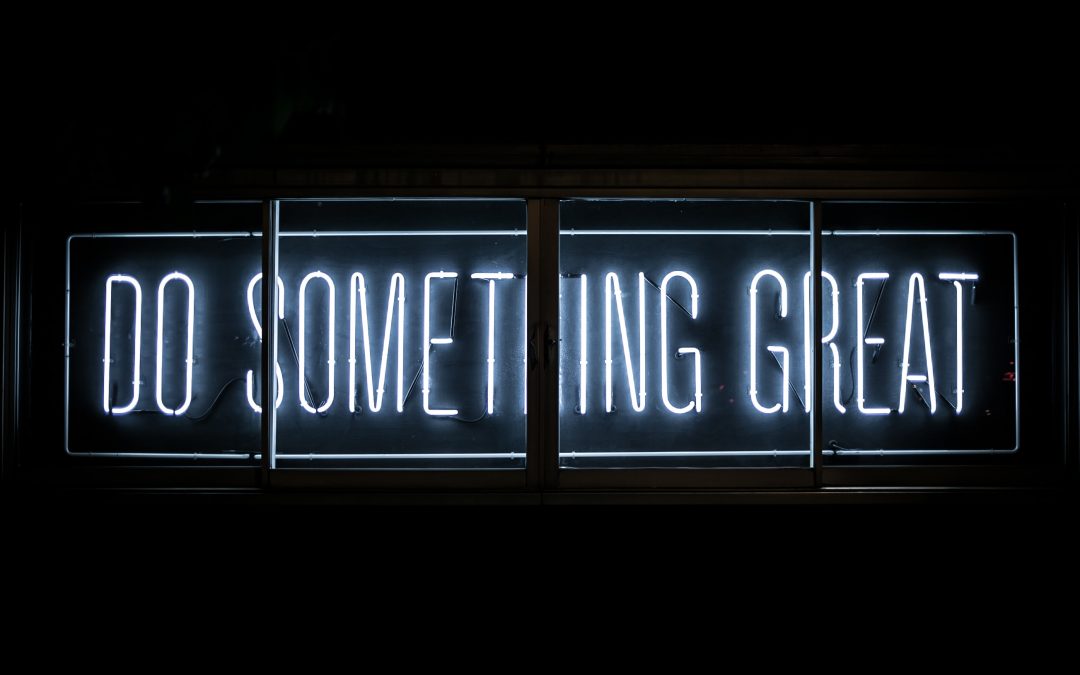
Lego, Blocks, and Better User Interfaces
Lego is an ingenious invention in that there is value in the individual blocks, but unlimited value in what you can build with them. Sure, you get the instructions with a new set to build the race car, but what really rocks is the super jet-powered drone boat that you come up with yourself. Oh, and that drone boat? Yep, it has lasers attached.
This notion of plugging bricks together is becoming more and more prevalent in technology. There are tools such as Zapier, which allow you to connect together different components to automate business workflow:
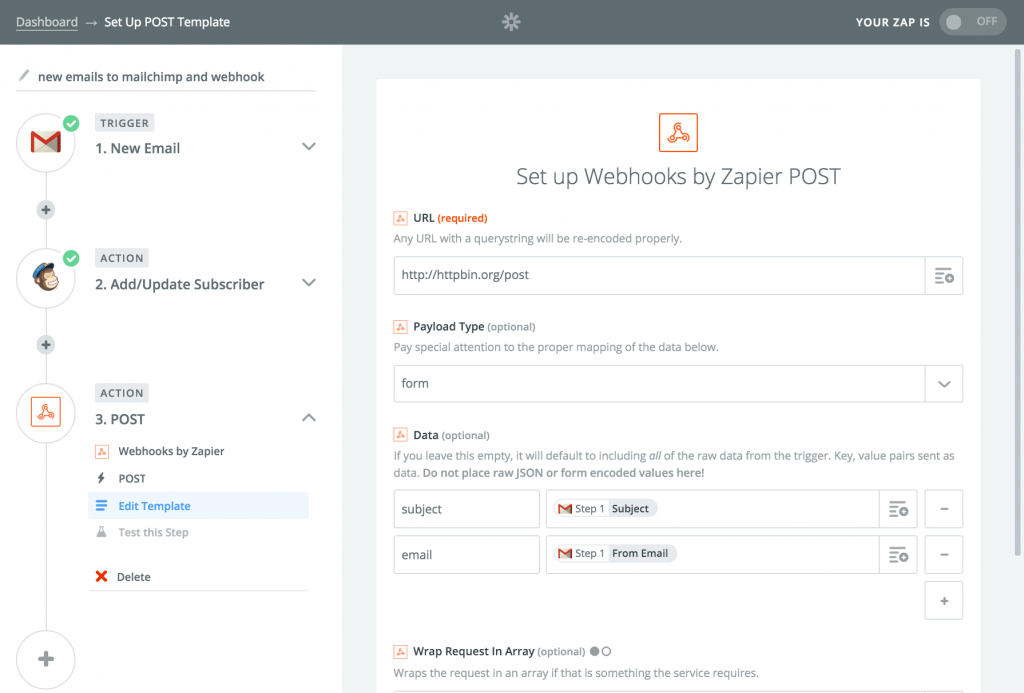
There is Axe Edit, which is used to produce audio patches for the Axe FX line of guitar processors:

We have even seen this model in action for teaching kids rudimentary methods of programming and logic, such as with Scratch:
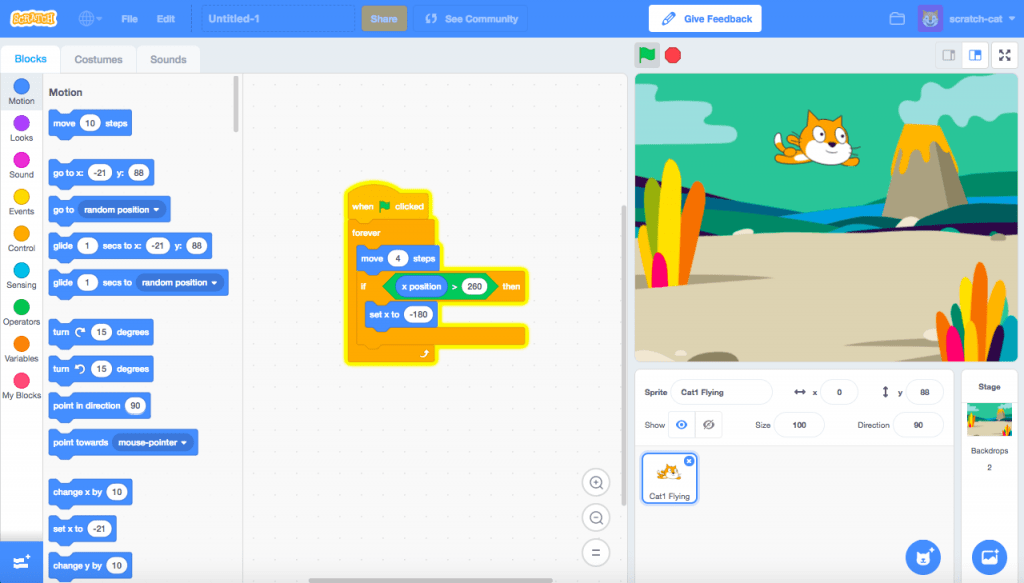
Part of the reason this block-based model works is that building things is intrinsically intuitive to us. There is a reason why Lego has been so popular with kids for the last 69 years: we like to build things from a very early age.
There are also various psychological benefits with this kind of block-based collaboration, such as increased communication between builders of their intention and key concepts, generating social capital for active participation, increased speech and communication, and a focus on central problem solving and implementing and testing hypotheses. It is no surprise that Lego is increasingly used in team building and problem solving workshops.
This block-based approach clearly works. What I find interesting though is just how powerful of an approach this is not just for structuring collaborative tools, but also how you can build engagement and communities around it.
Why This Works
There are 5 key areas that I think are important to highlight here.
#1. Connecting together blocks is simple and intuitive
As mentioned above, clicking together blocks is a fundamentally intuitive approach to building things. We think about what we want to do, select a block, connect it to another block, and see if it works. We do this via trial and error and it builds a mental model of not just how the blocks work, but how combinations of blocks work.
For example, in Zapier, once I understand (1) what two blocks do (such as Google Docs and WordPress), and (2) how to click them together, I can immediately generate value and improve my business. This results in a very low learning curve, and a very quick route to experiencing value (which is often not the case as products get more and more complex.)
#2. Each new block expands the potential and value of the tool
When I understand this core approach of how to connect blocks together, it also generates a sense of unlimited potential.
“All I need to do is learn what all the blocks do, and I could build anything!”
This is the same “aha!” moment many kids have with Lego.
As such, when a tool adds new blocks (such as when new services are added in Zapier) it expands this sense of potential.
This is enormously gratifying. It converts the tool from being a very specific Swiss army knife with a very specific set of blades and applications, into this:
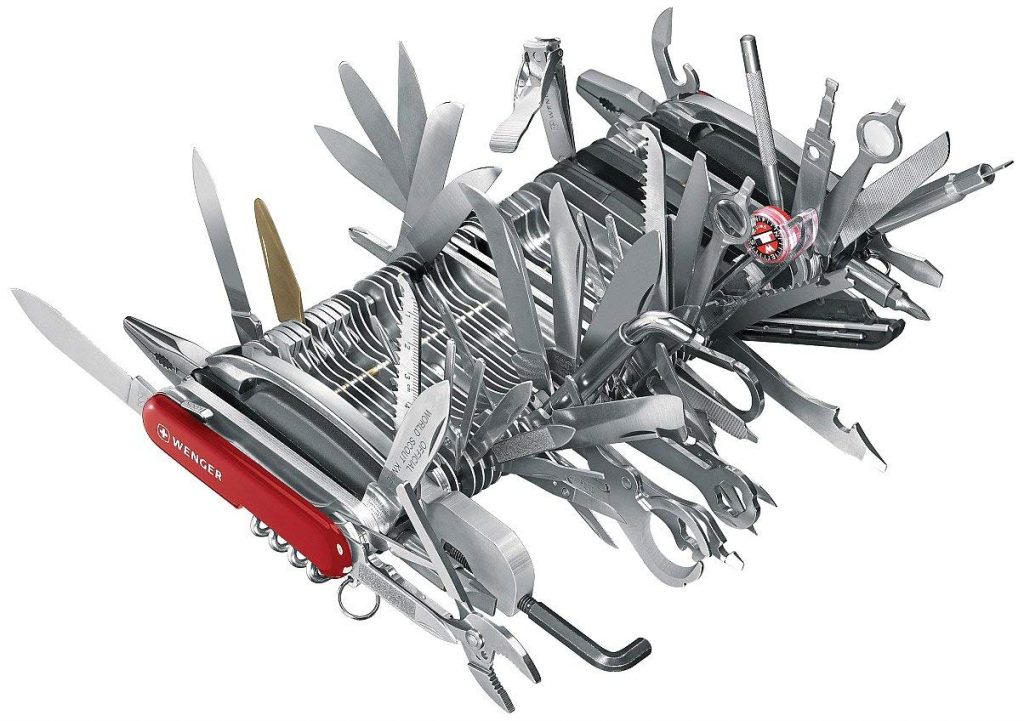
Importantly though, because we already understand how to click together blocks, each new block provides expanded value with a limited cost in understanding how to harness it: you already know how to plug them together.
#3. This model maps well to seemingly very specific problems
When most people evaluate a tool or service, they have a very specific set of problems they want to solve, but they want to ensure the tool or service can serve them well into the future (and with unseen future problems.)
This can be frustrating. For example, there are a zillion marketing tools all of which have great features, but all of which are missing something key to my specific work. I just deal with it, presuming that only I need that specific feature as opposed to the general audience needing it.
With this block-based on model, you just connect together the right blocks that are very specific to your needs. Zapier is another good example here: I have used it to automate elements of my business that are likely completely specific to me.
All of this means that evaluating and choosing a tool is much easier: we know that we can ultimately solve almost any problem if we have the right set of blocks available.
#4. We have to do the creative thinking for prospective users/customers.
Speaking of which, the risk of the block-based approach is that you need your audience to be able to have the creativity to come up with the right combinations of blocks to solve their problems. They need to be able to understand the components of their problem and how they map to the tool.
I love how Zapier solves this. On their website you can click on the tools/platforms you use (here, I selected Google Sheets and Gmail), and it will suggest combinations:
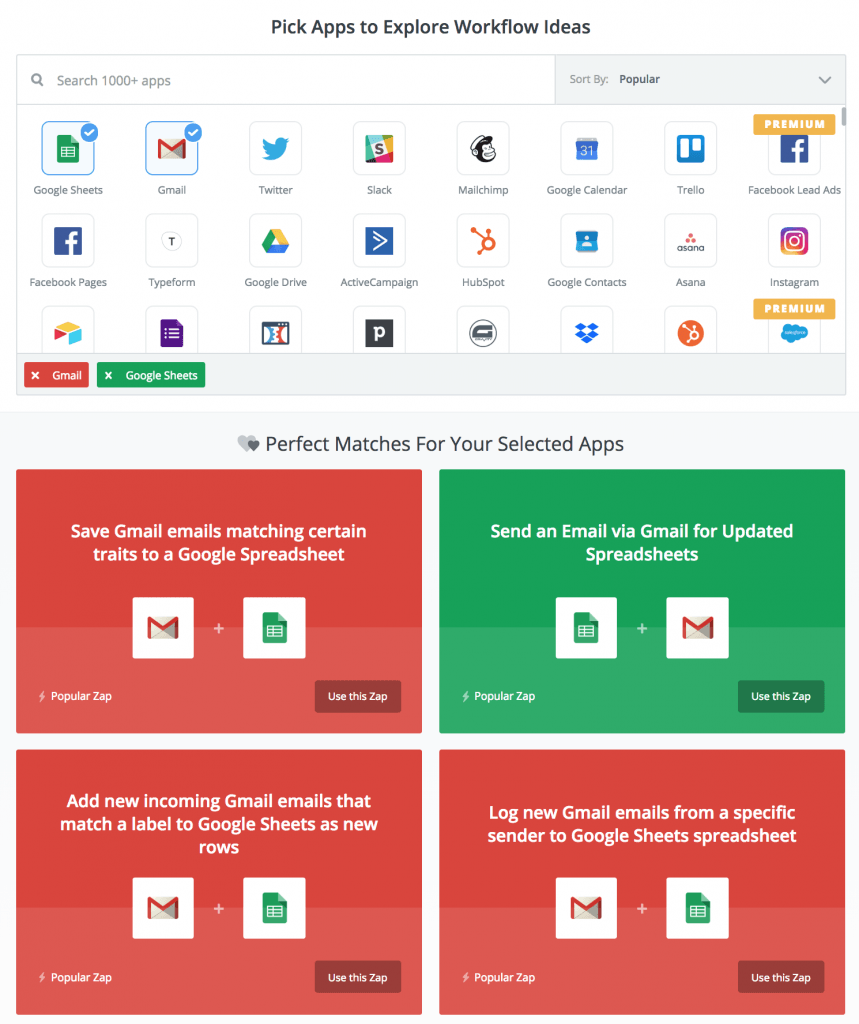
This is really important. While the suggested zaps might not map to problems the user has, it will start to seal in their brain the notion of how these blocks can be combined to generate interesting outcomes. I suspect the conversation rate from that page into new trials is pretty high. 🙂
#5. There is a clear opportunity for segmenting and building communities
When I work with clients in the early stages of a community strategy engagement, we discuss what kinds of community they want to build. Building a community of users is very different to building a community of contributors.
The communities that succeed provide a simple way of adding value to the broader ecosystem around the product/tool. With these kinds of block-based tools, putting together a combination of blocks and sharing it with your fellow community members is a really simple way of participating. We have seen this, for example, with the AxeChange community which has hundreds of submitted patches for sounds that you can load into your Axe FX:
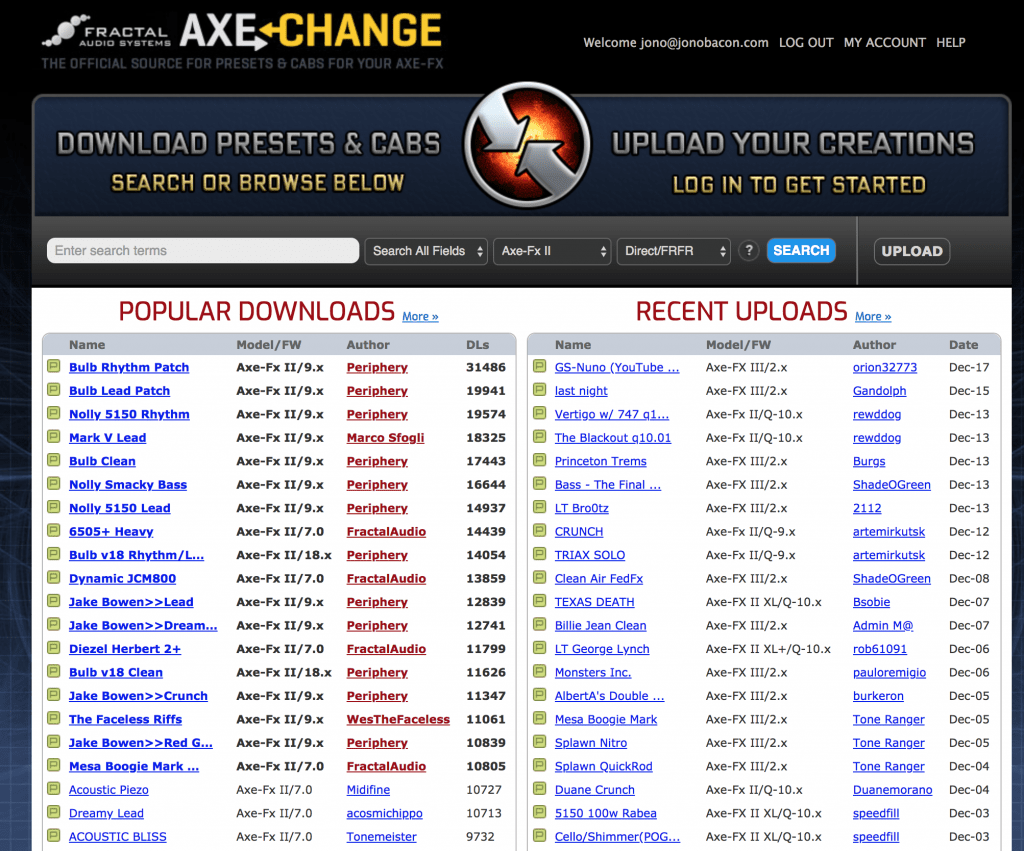
Interestingly though, you could also produce communities where (1) people could contribute blocks that could be available in the tool, and (2) people contribute to the tool itself (such as with an open source community.)
These three communities (block combinations, contributed blocks, and tool contributions) require very, very different community strategies, but all have very clear (yet different) potential for generating value with varying degrees of technical expertise.
I suspect we are going to continue to see more and more companies taking this approach to using blocks to build combinations and pipelines. It is one of the most elegant approaches I have seen for not just providing an intuitive way for people to work, but also for quick and efficient on-boarding, clear community participation, and always expanding value and potential.
What do you think? Have you seen other examples of these kinds of interfaces that work well? Have you seen some examples that don’t work well? Share your insight in the comments!
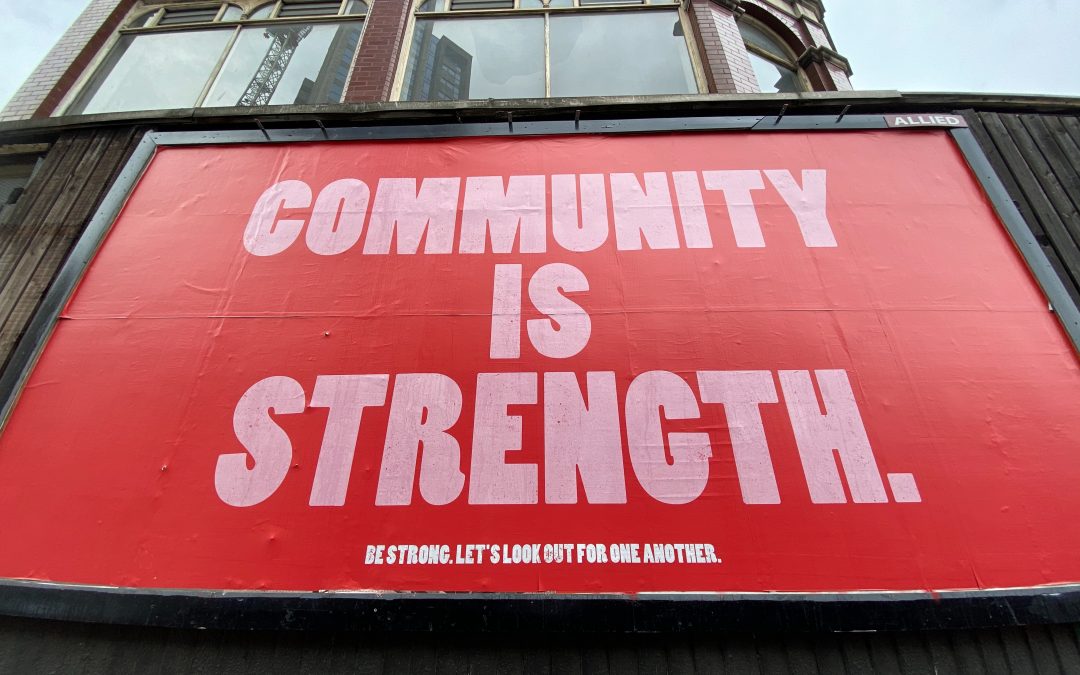
10 Ways To Up Your Public Speaking Game
Public speaking is an art form. There are some amazing speakers, such as Lawrence Lessig, Dawn Wacek, Rory Sutherland, and many more. There are also some boring, rambling disasters that clog up meetups, conferences, and company events.
I don’t claim to be an expert in public speaking, but I have had the opportunity to do a lot of it, including keynotes, presentation sessions, workshops, tutorials, and more. Over the years I have picked up some best practices and I thought I would share some of them here. I would love to hear your recommendations too, so pop them in the comments.
1. Produce Clean Slides
Great talks are a mixture of simple, effective slides and a dynamic, engaging speaker. If one part of this combination is overloading you with information, the other part gets ignored.
The primary focus should be you and your words. Your #1 goal is to weave together an interesting story that captivates your audience.
Your slides should simple provide a visual tool to help get your words over more effectively. Your slides are not the lead actress, they are the supporting actor.
Avoid extensive amounts of text and paragraphs. Focus on diagrams, pictures, and simple lists.
Good:
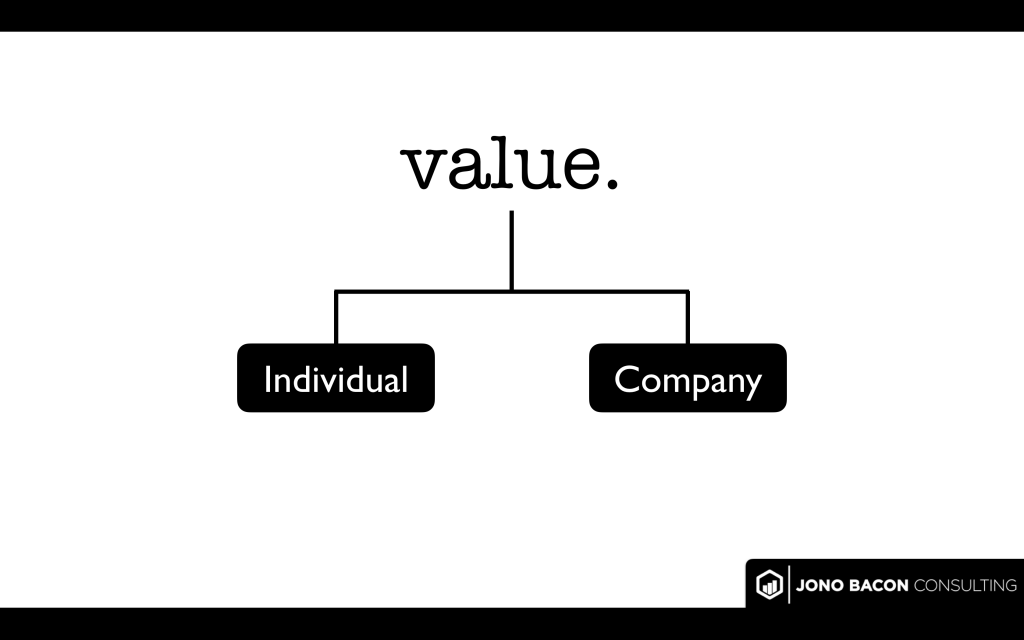
Bad:
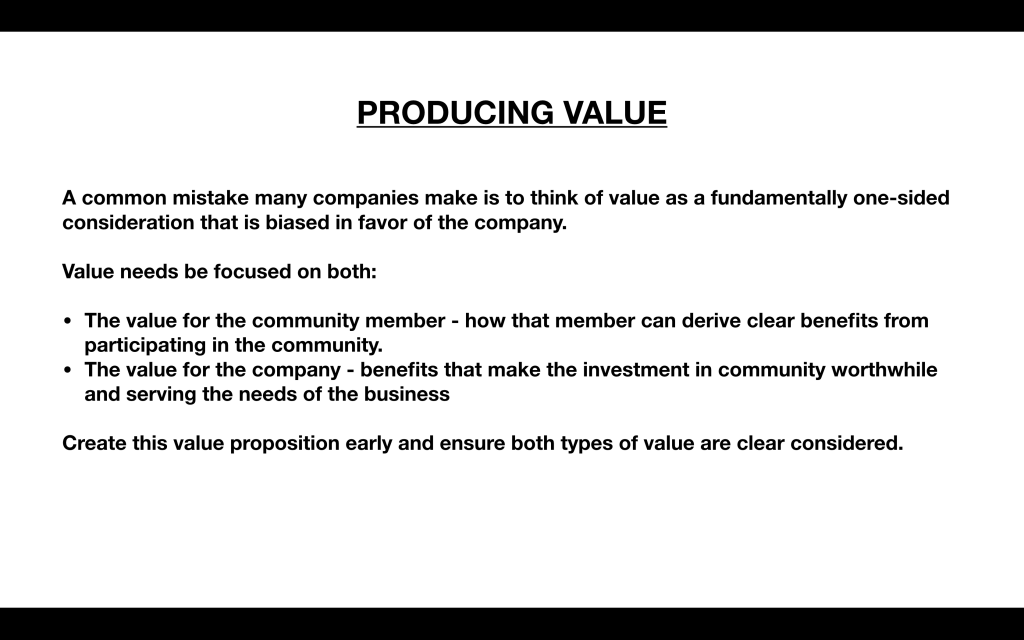
Look at the slides of great speakers to get your creativity flowing.
2. Deliver Pragmatic Information
Keynotes are designed for the big ideas that set the stage for a conference. Regular talks are designed to get over key concepts that can help the audience expand their capabilities.
With both, give your audience information they can pragmatically use. How many times have you left a talk and thought, “Well, that was neat, but, er…how the hell do I start putting those concepts into action?“
You don’t have to have all the answers, but you need to package up your ideas in a way that is easy to consume in the real world, not just on a stage.
Diagrams, lists, and step-by-step instructions work well. Make these higher level for the keynotes and more in-depth for the regular talks. Avoid abstract, generic ideas: they are unsatisfying and boring.
3. Build and Relieve Tension
Great movies and TV shows build a sense of tension (e.g. a character in a hostage situation) and the payoff is when that tension is relieved (e.g. the character gets rescued.)
Take a similar approach in your talks. Become vulnerable. Share times when you struggled, got things wrong, or made mistakes. Paint a picture of the low point and what was running through your mind.
Then, relieve the tension by sharing how you overcame it, bringing your audience along for the ride. This makes your presentation dynamic and interesting, and makes it clear that you are not perfect either, which helps build a closer connection with the audience. Speaking of which…
4. Loosen Up and Be Yourself
Far too many speakers deliver their presentations like they have a rod up their backside.
Formal presentations are boring. Presentations where the speaker feels comfortable in their own skin and is able to identify with the audience are much more interesting.
For example, I was delivering a presentation to a financial services firm a few months ago. I weaved in it stories about my family, my love of music, travel experiences, and other elements that made it more personal. After the session a number of audience members came over and shared how it was refreshing to see a more approachable presentation in a world that is typically so formal.
Your goal is to build a connection with your audience. To do this well they need to feel you are on the same level. Speak like them, share stories that relate to them, and they will give you their attention, which is all you can ask for.
5. Involve Your Audience (but not too much)
There is a natural barrier between you and your audience. We are wired up to know that the social context of a presentation means the speaker does the talking and the audience does the listening. If you violate this norm (such as heckling), you would be perceived as an asshole.
You need to break this barrier, but to never cede control to your audience. If you loose control and make the social norm for them to interrupt, your presentation will be riddled with audience noise.
Give them very specific ways to participate, such as:
- Ask how they are doing at the beginning of a talk.
- Throw out questions and invite them to put their hands up (or clap loudly.)
- Invite someone to volunteer for something (such as a role play scenario.)
- Take and answer questions.
6. Keep Your Ego in Check
We have all seen it. A speaker is welcomed to the stage and they constantly remind you about how great they are, the awards they have won, and how (allegedly) inspirational they are. In some cases this is blunt-force ego, in some cases it is a humblebrag. In both cases it sucks.
Be proud of your work and be great at it, but let the audience sing your praises, not you. Ego can have a damaging impact on your presentation and how you are perceived. This can drive a wedge between you and your audience.
7. Don’t Rush, but Stay on Time
We live in multi-cultural world in which we travel a lot. You are likely to have an audience from all over the world, speaking many different languages, and from a variety of backgrounds. Speaking at a million words a minute will make understanding you very difficult some people.
Speak at a comfortable pace, and don’t rush it. Now, some of you will be natural fast-talkers, and will need to practice this. Remember these?:
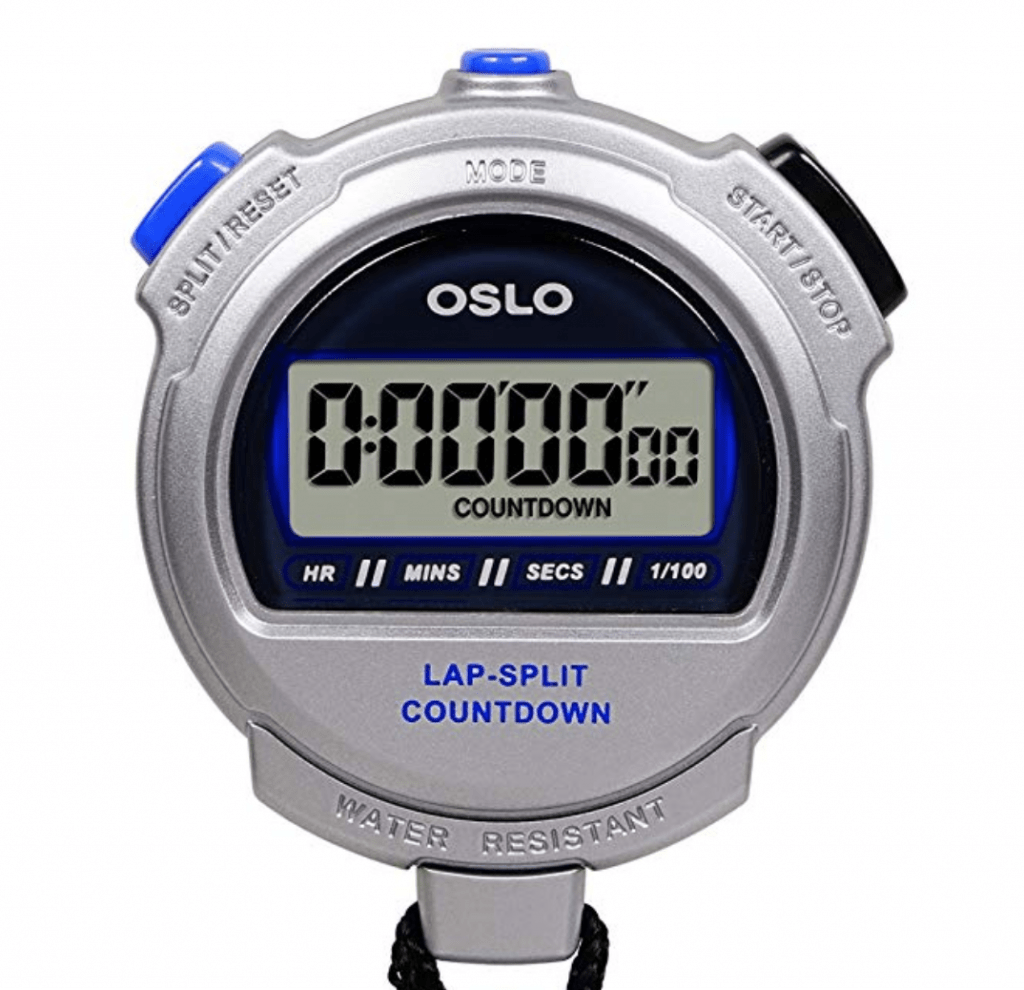
Well, we now all have them on our phones. Switch it on, practice, and ensure you always finish at least a few minutes before your allocated time. This will give you a buffer.
Running over your allocated time is a sure-fire way to annoy (a) the other speakers who may have to cut their time short, and (b) the event organizer who has to deal with overruns in the schedule. “But it only went over by a few minutes!” Sure, but when everyone does this, entire events get way behind schedule. Don’t be that person.
8. Practice and get Honest Feedback
We only get better when we practice and can see our blind spots. Both are essential for getting good at public speaking.
Start simple. Speak at your local meetups, community events, and other gatherings. Practice, get comfortable, and then file papers at conferences and other events. Keep practicing, and keep refining.
Critique is essential here. Ask close friends to sit in your talks and ask them for blunt feedback afterwards. What went well? What didn’t go well? Be explicit in inviting criticism and don’t overreact to them when you get it. You want critical feedback…about your slides, your content, your pacing, your hand gestures…the lot. I have had some very blunt feedback over the years and it has always improved my presentations.
9. Never Depend on Conference WiFi
It rarely works well, simple as that.
Oh, and your mobile hotspot may not work either as many conference centers often seem to be built in borderline faraday cages. Next…
10. Remember, it is just a Presentation
Some people get a little wacky when it comes to perfecting presentations and public speaking. I know some people who have spent weeks preparing and refining their talks, often getting into a tailspin about imperfections that need to be improved.
The most important thing to worry about is the content. Is it interesting? Is it valuable? Does it enrich your audience? People are not going to remember the minute details of how you said something, what your slides looked like, and what whether you blinked too much. They will remember the content and ideas: focus on that.
Oh, and a bonus 11th: turn off animations. They are great in the hands of an artisan, but for most of us they look tacky and awful.
I am purely scratching the surface here and I would love to hear your suggestions of public speaking tips and recommendations. Share them in the comments! Oh and be sure to join as a member, which is entirely free.

Speaking Engagements in Tel Aviv in December
I am excited to share that I will be heading to Tel Aviv later this month to speak at a few events. I wanted to share a few details here, and I hope to see you there!
DevOps Days Tel Aviv
Dev Ops Days Tel Aviv
Tues 18 December 2018 + Wed 19 December 2018 at Tel Aviv Convention Center, 101 Rokach Blvd, Tel Aviv, Israel.
I am delivering the opening keynote on Tuesday 18th December 2018 at 9am.
Meetup: Building Technical Communities That Scale
Thu 20th Dec 2018 at 9am at RISE, Ahad Ha’Am St 54, 54 Ahad Ha’Am Street, Tel Aviv-Yafo, Tel Aviv District, Israel.
I will be delivering a talk and participating in a panel (which includes Fred Simon, Chief Architect of JFrog, Shimon Tolts, CTO of Datree, and Demi Ben Ari, VP R&D of Panorays.)
Get Tickets (Space is limited, so grab tickets ASAP)
I popped a video about this online earlier this week. Check it out:
I hope to see many of you there!

Forbes Piece: The Five Ways Peloton Weave Community and Content Beautifully
This is an article I wrote for Forbes, which I wanted to share here too.
Peloton are a fascinating company. Founded in 2012, they started selling their spinning bikes in 2014. These bikes are not your usual spinning affair though, they have large touchscreen wedged on the front:

The Peloton Bike
The screen is used to stream live classes to the bike. A rider can see a calendar of different classes, opt-in, and join an instructor who guides them through the different aspects of the class, such as increasing speed and resistance, and even arm exercises with the companion weights. Can’t make a class? There are a huge library of classes on-demand, including floor exercises, and even yoga.
There is little doubt that Peloton are killing it. They are valued at $4billion, with an IPO likely happening early next year. At $2000+ for a bike, they don’t come cheap, and you also need to throw in the $39/month subscription to access the classes and content. The price hasn’t put people off though, and they have sold over 300,000 bikes.
Interestingly, when they raised the price of the bike, they sold more. Why? I believe it is because they have married convenience with carefully crafted community and gamification.
Unlocking Competitive Spirit
Psychologically, competition is an important component of how we behave. It is often extrinsically motived: we become competitive because we want the reward…the prize, the new job, the recognition, or something else. There have been a number of examples where this competitive spirit has been used to harness positive outcomes such as the Orteig Prize, the Ansari X Prize, and many others.
Fitness is tough because it typically rests on intrinsic rewards: you want to feel better, lose weight, or get faster. There is no gift basket for feeling better, losing weight, or getting faster, unless you are an athlete. For the layperson, they need to be willing to invest significant effort in exercising to generate these intrinsic rewards. For many, this is a bridge too far.
The Peloton Approach
To think of Peloton as an exercise equipment manufacturer is a mistake. They are a content company, and it is their library of content at is the driver of their success.
Exercise content and bikes have been around forever though. It is the integration between the bike, content, and importantly, unlocking personal and social competition that is where their secret sauce is brewed. There are five key areas in which they are doing this.
